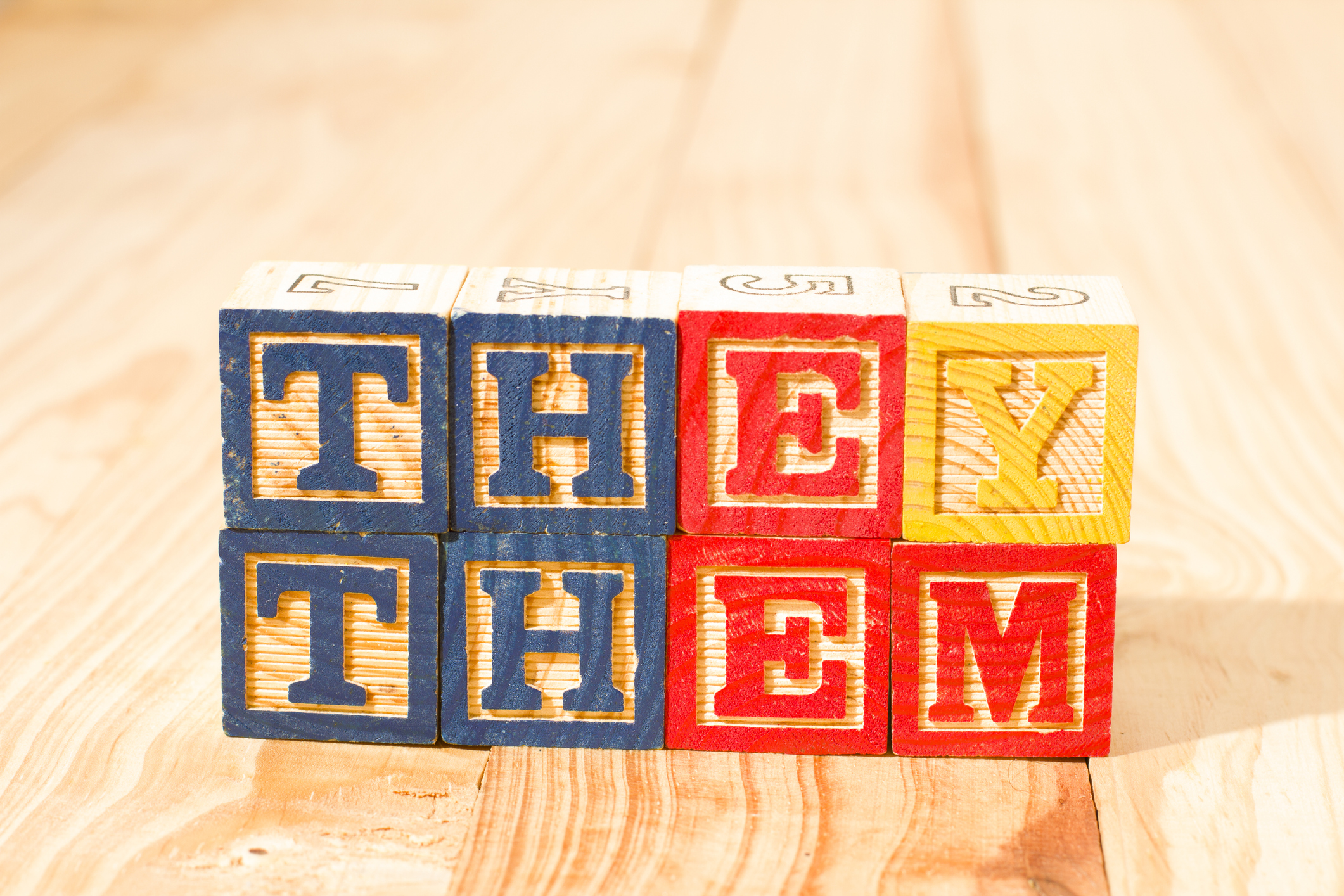Language has always evolved as societies have changed and progressed. Today, as gender diversity becomes more common, our language is transforming to become more inclusive and more accurately represent all individuals. One way language has changed is in our use of pronouns regarding gender. Your child may have questions about how to use pronouns, and you may have some of the same questions. Let’s discuss what gendered pronouns are and how and why we should be aware of them.
What are pronouns?
Pronouns are words or word phrases that can replace a noun or a noun phrase. Using pronouns helps make sentences less awkward and more clear, and pronouns are used to identify and even describe others. The proper use of pronouns can show respect for others and validate others’ choices. Examples of pronouns include “she/he,” “them,” “something,” “anyone.” When talking about people, pronouns are often used from a third-person perspective. For example, “Samantha has been a great tutor. Our son loves working with her.” In this example, “her” is used in the place of Samantha’s name. There are pronouns that are gender-specific, such as “her/him,” and “herself/himself”. There are also pronouns that are gender neutral like “they” and “them.” Gender-neutral pronouns are often used by those individuals who do not feel they fit into a binary identity, or, in other words, they don’t associate as male or female.
When do children start using pronouns?
Children begin to develop gender associations in infancy (Zosuls, 2009). This occurs at about the same time children are beginning to speak and understand pronouns. Between the ages of 3 to 6 years old children’s thoughts regarding gender norms and rules become more concrete (Mayo Clinic, 2021). During these early stages of speech development, parents can help their children avoid making assumptions about a person’s pronouns based on what a person looks like, sounds like, or the person’s name (Pride Resource Center: Colorado State University, 2020). When speaking to your child on this topic, you may want to have, or continue, discussions with your child about respect for others and why having and showing respect is important.
Why should we be concerned about using the correct pronouns?
Gender identity is a person’s own knowledge of who they are (Pride Resource Center: Colorado State University, 2020) and this may, or may not, align with the sex they were born with. To show respect to other people in our lives we need to refer to them by pronouns that align with their gender identity.
How do I help my child learn how to use appropriate pronouns?
Parents can help model positive gender pronoun usage by introducing themselves to new people by giving their names and preferred pronouns. For example, you may say “Nice to meet you. My name is Kaitlyn and I use she/her (or whichever pronouns you choose). What pronouns do you use?” If you are not used to this type of introduction, it will probably be awkward and uncomfortable at first, but with practice, you’ll become used to it. Parents can also model this behavior in groups. For instance, instead of saying “listen up boys and girls” try “listen up everybody.”
Additional tips for helping your child develop healthy pronoun usage.
- Help your child understand that people’s appearances may not reflect their gender or pronoun preference.
- Have conversations with your children to help them understand that they can’t know how someone feels on the inside based on how they look or sound on the outside.
- Provide your children with books and games that represent people in non-stereotypical gender roles.
Ensuring that your children know how to use pronouns will help them more easily navigate social interactions moving forward. By modeling behavior in front of our children, we can help them better understand correct pronoun usage.
Additional Resources
Human Rights Campaign Foundation. (n.d.) Be prepared for questions and put-downs about gender. https://welcomingschools.org/resources/be-prepared-for-questions-and-put-downs-about-gender
Locke, K. (2021). What are your words? A book about pronouns. Little, Brown Books for Young Readers.
References
Mayo Clinic. (2021, January 16). Children and gender identity: Supporting your child. https://www.mayoclinic.org/healthy-lifestyle/childrens-health/in-depth/children-and-gender-identity/art-20266811
Pride Resource Center: Colorado State University. (2020). A family’s guide to gender & pronouns. https://parentsandfamily.colostate.edu/wp-content/uploads/sites/13/2020/12/Family-Parent-Guide-to-Gender-Pronouns-_English.pdf
Zosuls, K. M., Ruble, D. N., Tamis-Lemonda, C. S., Shrout, P. E., Bornstein, M. H., & Greulich, F. K. (2009). The acquisition of gender labels in infancy: Implications for gender-typed play. Developmental Psychology, 45(3), 688–701. https://doi.org/10.1037/a0014053








